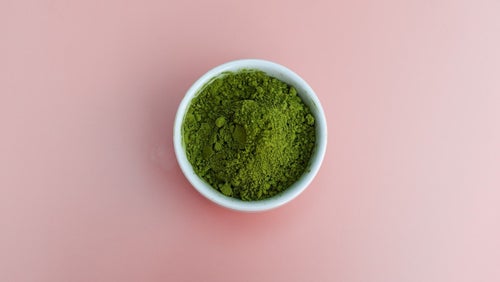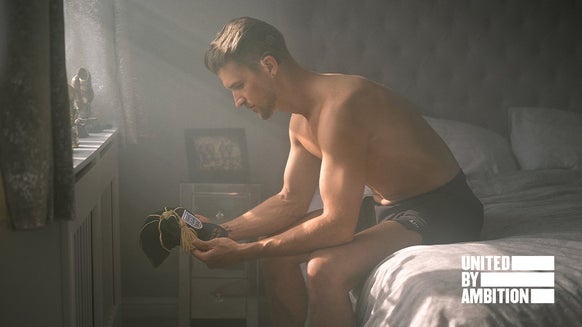
The Sirtfood Diet was developed in 2015 by two nutritionists; Aidan Goggins and Glen Matten. They suggest
The proposed science behind the diet is all based around the power these sirtfoods have on the ‘sirt’ proteins. There are seven sirt proteins (S1-7), and each has specific metabolic functions.
S1 is associated with fat breakdown and weight loss. The founders of the diet suggest that it activates the “skinny gene” pathways in the body. These “skinny gene” pathways are the same ones more commonly activated by fasting and exercise. They help the body to burn fat, increase muscle mass and improve health.
The authors of The Sirtfood Diet believe that eating sirtfoods not only activates sirt genes, but they also help to stabilise blood sugars and fight inflammation. Sirtuins have been identified as having an important role in anti-ageing.
What is the Sirtfood Diet?
There are two phases to the diet that last a total of 3 weeks. After that, you can continue consuming foods high in Sirtfood.
During the first three days, calorie intake is limited to 1000 calories per day and consists of green juices, plus normal meals rich in ‘Sirtfoods’. On days four to seven, calorie intake is increased to 1500 calories and consists of two juices and two meals.
The Sirtfood Diet plan focuses on upping your intake of 'healthy' Sirtfoods. These include:
- Red wine
Kale Strawberries Onions Soy Parsley Extra virgin olive oil Dark chocolate (85% cocoa) Matcha green tea Buckwheat Turmeric Walnuts Arugula (rocket) Bird’s eye chilli Lovage Medjool dates Red chicory Blueberries Capers Coffee
Week 1:
Limit your intake to 1000 calories a day Drink three sirtfood green juices a day Eat one sirtfood rich meal a day. A book is also sold with the diet that includes recommended recipes
Week 2:
Up your intake to 1500 calories a day Drink two sirtfood green juices a day Eat two sirtfood-rich meals a day.
It's recommended to have around 10 portions of sirtfoods a day for weight loss and five for maintenance.
A big part of the diet is the green juice, containing 75g kale, 30g rocket, half a green apple, 1cm ginger, 2 sticks celery, half a lemon, 5g parsley and ½ teaspoon matcha which needs to be made with a juicer.
The Sirtfood Diet plan apparently works in two ways. The first is that Sirtfoods stimulate sirtuin genes, which are said to influence the body’s ability to burn fat and boost the metabolic system.
The second way the Sirtfood Diet works to help you lose weight is by restricting calories over 3 weeks, often below majority of the populations basal metabolic rate (BMR).
What do we say?
The diet is high in foods that have many benefits such as green tea, turmeric, plenty of vegetables such as kale, onions, parsley, fruits such as blueberries and many anti-inflammatory foods like walnuts and olive oil. From a nutritional density view, foods containing high levels of sirtuins also provide good levels of nutrients which are overall linked to improved health, however, keeping this particular diet up long term can prove very difficult.
Further doubt is cast over this diet when we consider some of the specific claims. Losses of seven pounds a week are unrealistic and are very unlikely to reflect changes to body fat.
The verdict
Until there is more evidence to support the diet's claims we have to rule this one, science fiction.
If you restrict calories, whether those calories come from Sirtfoods or not, you’ll lose weight. Of course, opting for greens and berries instead as opposed to cake helps with our overall health and wellbeing.
Overall, there hasn’t been enough research done to determine whether The Sirtfood Diet really works yet.
Until we can make an evidence-based conclusion on whether this diet is any better than the regular calorie restrictive diet, more studies will need to be done on humans.
READ THESE NEXT:

8 Benefits Of Fish Oil
It has even been shown to improve mental well-being....

7 Health Benefits Of Green Tea
Reduce inflammation, decrease body fat, improve blood flow and loads more....

Blood Type Diet | Eating For Your Blood Type
And why science says it's a fad....

[1] http://www.thesirtfooddiet.com/about/
[2] Libert S, Guarente L. Metabolic and neuropsychiatric effects of calorie restriction and sirtuins. Annu Rev Physiol. 2013;75:669-84. doi: 10.1146/annurev-physiol-030212-183800. Epub 2012 Oct 1. PMID: 23043250; PMCID: PMC3570673.
[3] Libert S, Guarente L. Metabolic and neuropsychiatric effects of calorie restriction and sirtuins. Annu Rev Physiol. 2013;75:669-84. doi: 10.1146/annurev-physiol-030212-183800. Epub 2012 Oct 1. PMID: 23043250; PMCID: PMC3570673.
[4] Pallauf K, Giller K, Huebbe P, Rimbach G. Nutrition and healthy ageing: calorie restriction or polyphenol-rich “MediterrAsian” diet? Oxid Med Cell Longev. 2013;2013:707421. doi: 10.1155/2013/707421. Epub 2013 Aug 28. PMID: 24069505; PMCID: PMC3771427.
[5] Rahnasto-Rilla, M., Tyni, J., Huovinen, M. et al. Natural polyphenols as sirtuin 6 modulators. Sci Rep 8, 4163 (2018). https://doi.org/10.1038/s41598-018-22388-5
[6] Giblin W, Skinner ME, Lombard DB. Sirtuins: guardians of mammalian healthspan. Trends Genet. 2014 Jul;30(7):271-86. doi: 10.1016/j.tig.2014.04.007. Epub 2014 May 28. PMID: 24877878; PMCID: PMC4077918.
[7] Chang HC, Guarente L. SIRT1 and other sirtuins in metabolism. Trends Endocrinol Metab. 2014 Mar;25(3):138-45. doi: 10.1016/j.tem.2013.12.001. Epub 2013 Dec 30. PMID: 24388149; PMCID: PMC3943707.
[8] Kreitzman SN, Coxon AY, Szaz KF. Glycogen storage: illusions of easy weight loss, excessive weight regain, and distortions in estimates of body composition. Am J Clin Nutr. 1992 Jul;56(1 Suppl):292S-293S. doi: 10.1093/ajcn/56.1.292S. PMID: 1615908.
[9] Kanfi Y, Naiman S, Amir G, Peshti V, Zinman G, Nahum L, Bar-Joseph Z, Cohen HY. The sirtuin SIRT6 regulates lifespan in male mice. Nature. 2012 Feb 22;483(7388):218-21. doi: 10.1038/nature10815. PMID: 22367546.
[10] Müller MJ, Enderle J, Bosy-Westphal A. Changes in Energy Expenditure with Weight Gain and Weight Loss in Humans. Curr Obes Rep. 2016 Dec;5(4):413-423. doi: 10.1007/s13679-016-0237-4. PMID: 27739007; PMCID: PMC5097076.








